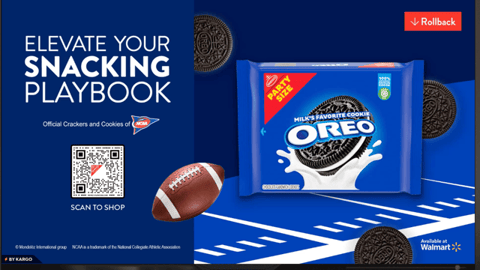Brand Safety Is Essential in Today’s Social Media Landscape. Here’s How to Achieve It.
The internet is a minefield these days. As our culture becomes increasingly split along ideological lines, online branding can quickly become associated with the wrong ideas — in other words, ideas that are wrong for the image you’re maintaining.
Brand safety mechanisms provided by sites such as Facebook, though helpful, fail to account for the nuance needed in navigating a world where the word “shot” might involve a heated debate about Second Amendment rights, COVID-19 or basic wellness topics.
This is important for consumer goods brands in particular: Without paying close attention to the digital environment, the journey to achieving extensive reach and rapidly building awareness can have a lasting negative impact on perception and category growth. This is especially true when there’s a multitude of competitive alternatives in the space.
Furthermore, it’s critical to consider how consumer goods messaging is interpreted in context. If a lighthearted message (as is often the case for CGs) runs alongside controversial stories, the brand can be viewed as insensitive.
Navigating Branding Pitfalls
Advertisers and marketers have reason to be concerned. Around 78% of chief marketing officers believe ads placed within an unsuitable context can greatly damage brand reputation. And because social platforms run on user-generated content and are generally open to advertisers of diverse ideologies, there’s always a chance that your product will be in the same feed as content you find objectionable.
Our current climate has only made this worse, with fake news jeopardizing the credibility of social platforms and said platforms being hijacked by political advertisers and lobbyist groups. This is why many online brands are shifting their approach from brand safety to brand suitability.
Brand suitability is the logical evolution for protecting your brand on social media: It takes a more nuanced approach than the rigidity of common brand safety mechanisms by identifying advertising environments that reflect the image you’re maintaining. In short, brand suitability recognizes that each brand has its own tolerances or preferences for the type of content it wants to be associated with.
For Babe Wine, that means leaning into the uncomfortably comical side of brand suitability. It’s leveraged several partnerships that take life’s challenges and position them in ways that add levity to otherwise stressful times.
Back in July 2020, it partnered with dating app Bumble to help cover the moving costs of pandemic breakups. It also leaned into a contentious subject — the 2020 presidential election — and promoted an “Election Night Survival Kit” that ultimately sold out. Although this positioning reinforced the playful personality of the Babe brand, it could have certainly been a disaster for others.
Here are four ways you can protect your brand on social media without relying on cookie-cutter brand safety mechanisms:
1. Utilize brand safety filters
If you’re using the audience network for Facebook or another social platform, be sure to use the platform’s brand safety filters and apply your own block list for website placements. These aren’t perfect, but they’ll allow you to develop a more organic strategy that builds your online brand image constructively.
2. Adjust your block list regularly
Keep a close eye on your ad placements and make regular adjustments to your block lists when needed. Block any sites that contain ad stacking, bots, or ghost sites.
Also, be sure to utilize the resources a site like Facebook offers, where you can avoid (or even target) controversial social issues.
3. Do the extra work to understand your target audience
Of course, make sure your message is relevant to those who see it. Exclude interests in your targeting that have the likelihood of serving your ad to audiences that engage with topics you’d want to avoid.
Third-party data providers can be helpful in developing brand safety in advertising by providing users’ socioeconomic status, gender, age, interests, and more, so don’t be afraid to utilize their insights as well. Consider how your target audience searches for new products and choose channels accordingly to ensure better user experience and avoid wasted investment.
4. Keep it selective
Spend time considering which social media platforms best work for your brand, and don’t feel you’re missing out by staying away from ones that don’t. For instance, Instagram has less politically and socially divisive content than Facebook, but it has similar targeting capabilities and reach. There’s not a right or wrong option for brand safety, but there might be a good option for your specific needs.
There’s no getting around the hard work of brand suitability. Protecting your brand on the internet puts you in the role of a minesweeper, but that doesn’t mean it can’t be done. With some intentionality, research, and constant monitoring, you can grow your presence without sacrificing your image.
Sean Cotton is the president and co-founder of Coegi, an all-in-one premium marketing partner for media professionals seeking a streamlined way to leverage programmatic and social solutions. Sean is a veteran digital marketing practitioner, industry thought leader and 2017 winner of iMedia’s Industry Luminary award. He is also an adjunct professor at the University of Missouri, where he teaches interactive and programmatic techniques to the next generation of marketers.




